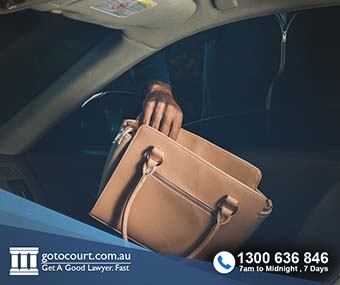Simple Offences, Crimes and ‘Either Way’ Offences (WA)
In Western Australia, how an offence is described in the statute affects whether the charge must be dealt with on indictment in the District or Supreme Court or as a summary offence in the Magistrates Court. West Australian legislation describes two types of offences: simple offences and crimes. There are also ‘either way’ offences contained in the Criminal Code. These offences can be dealt with either as simple offences or as a crimes.
What is a simple offence?
A simple offence in Western Australia is a criminal act referred to in the Criminal Code 1913 as an ‘offence’ and not a ‘crime.’ The Magistrates Court in Western Australia has exclusive summary jurisdiction and deals with all types of ‘simple offences.’ Simple offences cannot be dealt with in the District or Supreme Court. For example, under section 313 of the Criminal Code, a person who commits a common assault is guilty of a simple offence. Such a person is liable to imprisonment for up to18 months and a fine of up to $18,000 or if the offence is committed in circumstances of aggravation, to imprisonment for three years and a fine of up to $36,000.
Other examples of simple offences are:
- Possess or use a prohibited drug under section 6 (1) of the Misuse of Drugs Act 1981;
- Driving under the influence of alcohol etc under section 62 of the Road Traffic Act 1974; and
- Driving with a blood alcohol content of or above 0.08 under section 64 of the Road Traffic Act 1974.
What is a crime?
Under the Criminal Procedure Act 2004, any criminal act referred to as a ‘crime’ is an indictable offence. In Western Australia, an indictable offence may only be dealt with by the District or Supreme Court. The matter will commence in the Magistrates Court and then be committed to a higher court.
For example, under section 318A of the Criminal Code, any person who assaults an aircraft crew member is guilty of a crime and is liable to imprisonment for 14 years.
Other examples include:
- Sexual penetration without consent under section 325 (1) of the Criminal Code;
- Deprivation of liberty under section 333 of the Criminal Code; and
- Concealing a will under section 380 of the Criminal Code.
Limitation period
Unless otherwise prescribed, the prosecution of a person for a simple offence must be commenced within 12 months of the date of the alleged offence.
The prosecution of an indictable offence may be commenced at any time.
What is an ‘either way’ offence?
An ‘either way’ offence is an offence described as a crime for which the legislation sets out two maximum penalties – one that applies where the matter is dealt with in the summary jurisdiction (Magistrates Court) and another that applies where it is dealt with on indictment (District or Supreme Court). For example, under section 317 of the Criminal Code, a person who commits an assault causing bodily harm is guilty of a crime and is liable to a maximum penalty of five years imprisonment when dealt with on indictment (or seven if the offence is aggravated) but only to a maximum of two years imprisonment and a fine of $24,000 when the offence is dealt with in the summary jurisdiction (or three years and $36,000 if the offence is aggravated).
Other examples of ‘either way’ offences include:
- Fraud under section 409 of the Criminal Code;
- Possessing stolen or unlawful property under section 417(1) of the Criminal Code;
- Being armed in a way that may cause fear under section 68 of the Criminal Code;
- Indecent assault under section 323 of the Criminal Code; and
- Obscene act in public under section 202 of the Criminal Code.
‘Either way’ offences are dealt with in the summary jurisdiction unless the prosecution or defence makes an application under section 5(2) of the Criminal Code that the charge be tried on indictment. An application that an ‘either way’ offence be dealt with on indictment may be made based on:
- The seriousness of the offence and whether the Magistrates Court would be able to adequately punish the accused;
- Division 2A of the Sentencing Act 1995 (WA) and its application;
- Whether a co-accused is to be tried on indictment;
- Whether the charge forms part of a course of conduct committed by the accused; and
- The interests of justice.
If you require legal advice or representation in a criminal law matter or in any other legal matter, please contact Go To Court Lawyers.








